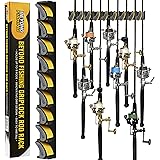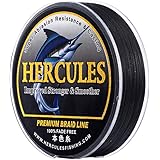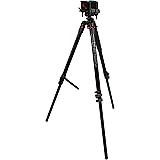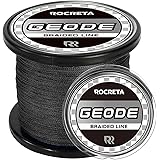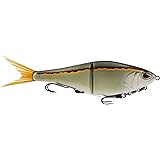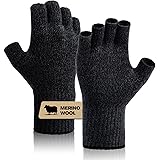When it comes to the exhilarating sport of trout fishing, the right bait or lure can make all the difference between a slow day and a reel-screaming adventure. Many anglers, especially those just starting out or looking to refine their tackle box, often seek practical advice on what truly works. The video above offers a fantastic, quick rundown of some highly effective, readily available options for trout fishing. However, understanding the ‘why’ behind each recommendation, along with specific techniques for deployment, can elevate your success even further.
This comprehensive guide dives deeper into the world of effective trout fishing baits and lures, expanding on the video’s excellent suggestions and providing additional insights to help you land more fish. We’ll explore not just what to use, but also when and how to maximize each bait’s potential, ensuring your next outing is both productive and enjoyable.
Spinning Success: Panther Martin and Rooster Tail Lures
Spinners are a classic for a reason: their irresistible flash and vibration mimic the natural prey of trout. Both Panther Martin and Rooster Tail spinners, highlighted in the video, are mainstays in many successful anglers’ tackle boxes, yet they offer distinct advantages.
Panther Martin Spinners: The Flash and Flutter
Panther Martin spinners are renowned for their unique design, featuring an inline blade that spins directly on the shaft. This creates a deeply enticing, almost pulsating vibration in the water, a powerful attractant for hungry trout. The blade’s action, often described as a ‘thumping’ motion, sends out vibrations that fish can detect from a distance, luring them in for a closer look.
- Why They Work: They simulate a small, distressed baitfish or a buzzing insect, making them an easy target. The metallic flash of the blade, especially in sunlight, acts like a beacon.
- When to Use Them: Panther Martins excel in clear to slightly stained water conditions, where their flash and profile can be fully appreciated by the fish. They are particularly effective in rivers and streams, cast upstream and retrieved just fast enough to get the blade spinning, or in still waters with a steady retrieve.
- Technique Tip: Vary your retrieval speed. Sometimes a slow, steady retrieve is all it takes; at other times, a quicker, erratic motion can trigger a strike, mimicking a darting minnow trying to escape. Consider bright colors like silver or gold in clear water, while darker or more vibrant patterns might stand out better in cloudy conditions.
Rooster Tail Spinners: The Hackle’s Allure
Rooster Tails, by contrast, feature a clevis-mounted blade that rotates freely, along with a distinctive hackle tail. This tail, often made of natural feathers, adds an extra layer of enticement, breathing with a lifelike movement that can prove irresistible. While the Panther Martin offers a more intense vibration, the Rooster Tail presents a more subtle, yet equally captivating, profile.
- Why They Work: The combination of blade flash and the pulsating hackle tail creates a natural, bug-like presentation. The tail acts like a living organism, enticing strikes even from finicky trout.
- When to Use Them: These lures are versatile, performing well in both moving and still waters. Their more natural, ‘soft’ appearance can be particularly effective when trout are being selective or when fishing pressure is high. Green, black, and white combinations are often deadly, especially in streams where insects are abundant.
- Technique Tip: Unlike some spinners, Rooster Tails can be effective with a slower retrieve, allowing the hackle to flutter enticingly. Try casting near submerged structures or eddy lines where trout often hold, letting the current impart natural action to the lure.
Both spinners are fantastic search baits, allowing you to cover water quickly and locate active fish. However, the Rooster Tail’s hackle tail can offer a slightly different presentation than the Panther Martin’s more direct vibration, giving anglers options depending on the trout’s mood.
Scent and Substance: The Power of Bait
While lures tempt trout with sight and vibration, bait appeals directly to their senses of smell and taste. The video correctly highlights PowerBait as a top contender, and its effectiveness is undeniable. Yet, delving deeper into its varieties and proper application can unlock even greater potential.
PowerBait: Scented Temptation for Trout
Berkley PowerBait is arguably one of the most popular and effective trout baits on the market. Its appeal lies in its strong scent, palatable texture, and its unique ability to float, keeping it off the bottom and in the trout’s strike zone. The video specifically mentions the corn flavor, a solid choice, but the PowerBait spectrum is vast.
- Why It Works: PowerBait is designed to mimic the natural food sources of trout while offering an intense scent trail. Its floatation means it can be fished effectively off the bottom, preventing it from getting lost in weeds or mud, presenting a more visible and appealing target.
- Varieties and Flavors: Beyond corn, PowerBait comes in numerous forms, including dough, nuggets, and even worm-like presentations. Popular flavors include garlic, cheese, and even salmon egg scents. Different colors, from vibrant neons to more natural browns and greens, can also make a significant impact depending on water clarity and the trout’s feeding preferences.
- Rigging for Success: The most common and effective way to fish PowerBait is on a slip-sinker rig. Thread your line through a small egg sinker, tie on a swivel, then attach a 12-24 inch leader with a small hook (sizes 10-14 are common). Mold a small ball of PowerBait around the hook, ensuring the hook point is covered. The sinker takes the bait to the desired depth, while the floating PowerBait lifts it off the bottom, presenting it perfectly. This setup allows fish to take the bait without feeling the weight of the sinker.
PowerBait is particularly effective in stocked lakes and ponds, where trout are often conditioned to eat pellet food. Its potent scent can draw fish in from a considerable distance, making it an excellent choice for still water scenarios where you’re waiting for the trout to come to you, rather than actively searching.
Subtle & Deadly: Tube Jigs and Cream Worms
For more nuanced presentations, or when trout are less aggressive, smaller, more natural-looking offerings can be incredibly effective. The Atomic Teaser tube jigs and the dollar trout cream worms, paired with tiny jig heads, exemplify this subtle approach.
Atomic Teaser Tube Jigs: Miniature Mimicry
Atomic Teaser tube jigs are small, hollow plastic tubes with tantalizing tentacles. Their design allows them to collapse easily when a fish bites, increasing hook-ups, and their subtle action is hard for trout to resist. They present a very natural, almost unassuming profile in the water, often resembling a small minnow, insect larva, or even a leeches.
- Why They Work: Their realistic profile and subtle, undulating action are key. When jigged gently, the tentacles pulse and flutter, mimicking a vulnerable creature. In clear water, this natural movement can be far more effective than a flashy spinner.
- When to Use Them: These are excellent choices for clear, calm waters or when targeting wary trout in pressured areas. They work well in both still and moving water. A slow, steady retrieve with occasional twitches can be deadly.
- Technique Tip: Pair these with a light line (2-4 lb test) and a sensitive rod. Cast them out and allow them to sink, then impart short, subtle jerks of the rod tip, letting the jig fall naturally between movements. This ‘lift and fall’ presentation is often what triggers a strike. Experiment with different colors, from natural greens and browns to brighter shades like white or chartreuse, depending on water clarity and the trout’s preference on a given day.
Trout Cream Worms & 1/32 oz Ball Head Jigs: The Finesse Factor
The combination of a soft, flexible trout cream worm and a tiny 1/32 oz ball head jig is a testament to the power of finesse fishing. These worms, often synthetic and scented, offer an incredibly lifelike appearance and action at an unbeatable price point. The specific mention of a 1/32 oz jig head is crucial, as this ultra-light weight allows for a very slow, natural fall and subtle presentation.
- Why This Combo Works: The cream worm’s soft texture and slender profile, combined with the minimal weight of the 1/32 oz jig, create an almost weightless, natural-looking presentation. It moves through the water with incredible fluidity, mimicking a real worm or insect larva effortlessly. This subtle approach is often the answer when trout are hesitant to strike larger, more aggressive lures.
- When to Use Them: This setup shines in highly pressured waters, during cold fronts when trout are lethargic, or in shallow, clear streams where a natural drift is paramount. The small size and light weight make it ideal for stream fishing where you want to drift your bait naturally downstream.
- Rigging and Presentation: Simply thread the cream worm onto the jig head. Cast upstream or across current, allowing the combo to drift naturally with the flow. Keep a tight line to feel for subtle bites. In still water, a slow retrieve with intermittent pauses can be effective, letting the worm flutter gently as it sinks. The key is to make it look as natural and effortless as possible, as if a real worm has simply fallen into the water.
This light tackle setup requires patience and a keen eye for detecting light bites. The beauty of the cream worm and light jig is its ability to fool even the most cautious trout, often when all other tactics fail.
Beyond the Bait: Mastering Your Trout Fishing Game
While having the right trout fishing baits and lures is critical, success in trout fishing extends beyond mere tackle selection. Understanding the environment, the fish’s behavior, and honing your technique will truly elevate your game.
Reading the Water and Understanding Trout Behavior
Trout are creatures of habit, often holding in specific areas. Look for:
- Structure: Submerged logs, rocks, and undercut banks offer cover and ambush points.
- Current Breaks: Areas where fast water meets slow water provide a resting place with easy access to food.
- Oxygenated Water: Especially in warmer months, trout seek cooler, well-oxygenated water, often near inlets or rapids.
- Food Sources: Observe for insect hatches on the surface or signs of baitfish in the water.
Trout are also sight feeders to a large extent. Clear water often means longer leaders and lighter line are necessary. In murky conditions, scent and vibration become even more crucial.
Casting and Retrieval Techniques
Each bait and lure requires a slightly different approach. However, some general principles apply:
- Match the Hatch: While more common for fly fishing, the concept applies to lures and bait. If you see specific insects or baitfish, try to imitate their size and color.
- Vary Your Retrieve: Rarely will a trout strike a bait that moves at a monotonous pace. Introduce pauses, twitches, and changes in speed to make your offering look more lifelike and erratic.
- Precision Casting: Accurate casting is essential, especially in rivers and streams, to place your bait or lure into tight pockets where trout hide.
- Stealth: Trout are easily spooked. Approach fishing spots quietly, and avoid heavy footsteps or casting shadows over the water.
The Importance of Line and Leader
For most trout fishing, especially with the finesse tactics discussed, a light line is paramount. 2-6 lb monofilament or fluorocarbon is generally suitable. Fluorocarbon is nearly invisible underwater, making it an excellent choice for clear water and wary trout. A quality leader, often a few feet of lighter fluorocarbon, can provide that extra bit of stealth.
Armed with a versatile selection of trout fishing baits and lures, from the flashy attraction of spinners to the subtle enticement of scented worms and jigs, you’re well-equipped for your next angling adventure. Remember, successful trout fishing is a blend of knowing your tackle, understanding the environment, and continuous learning. Keep experimenting with different presentations and locations, and you’ll undoubtedly find yourself enjoying more productive days on the water, reeling in those prized trout.


